Samsung Galaxy S6 edge+ Review
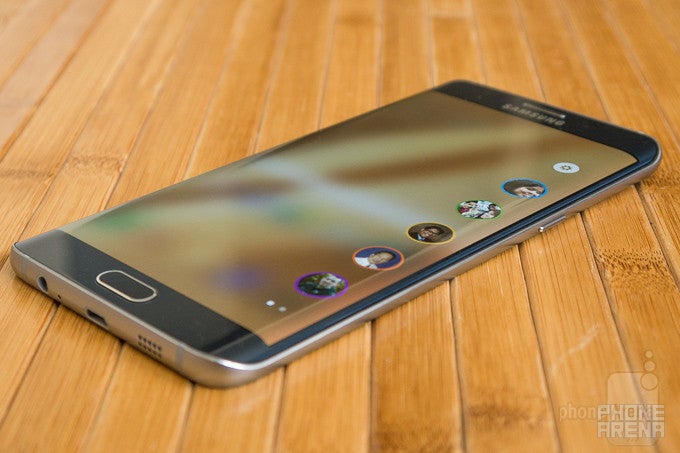
Introduction
When the Samsung Galaxy S6 edge was announced alongside the S6 earlier in the year, there was no arguing about Samsung’s decision to push forward with curved screens. Between the two of them, we found the S6 edge more fascinating, thanks to the undeniably exotic aesthetics of its dual-curved display. Generating such attention, it’s no wonder why Samsung is on the fast track to give consumers just a little bit more variety with one of its newest offerings.
From what we’ve seen so far, big phones are big business for the companies making them. Knowing that, it’s no surprise at all to know that the Samsung Galaxy S6 edge+ includes everything we know and love about the existing S6 edge, but takes things to a bigger scale – and by that, we mean a phone with a 5.7-inch display. Now, some might think it’s merely a larger edition of the S6 edge, but that’s not exactly the case, as the S6 edge+ is accompanied by a number of its own unique features to differentiate itself. While its addition to Sammy’s already diversified lineup is appreciated, it’s actually trying to make a name for itself in the phablet world.
Or is it just Samsung’s way of trying to capitalize on what’s hot and trending at the moment?
The package contains:
- Samsung Galaxy S6 edge+
- microUSB cable
- Wall charger
- Stereo headphones
- SIM removal tool
- Quick start guide
- Warranty card
Design
Aside from the larger footprint, it’s the same premium design we know and love. It’s still gorgeous, but we’re not as enthused because we’ve seen it before.
One look at the Galaxy S6 edge+, it’s hard to deny the obvious assertions about its design right from the onset – it’s just a bigger-sized version of the Galaxy S6 edge. That’s the undeniable reality, so in a way, it doesn’t achieve the same level of intrigue that we first experienced with its smaller sibling. Don’t get us wrong, it’s still an attractive phone paired with premium materials to accentuate the stylish aesthetics brought on by its dual-curved display. The metal and glass combination, much like other high-end offerings from Sammy’s camp, makes it one of the best-looking phones around right now!
In terms of size, it’s clearly more of a handful to use than the S6 edge, but that’s the expectancy for something categorized as a phablet. Comparing it to Sammy’s other notable phablet, the Note5, the S6 edge+ is technically longer, at 6.08-inches, but also narrower, skinnier, and lighter. Interestingly, though, it’s not quite as sharp around the edges where its metal trim bezel is skinnier. And of course, we can’t forget about the mesmerizing show produced by its design as light bounces off the glass surfaces to produce a shimmering effect at certain angles.
For all of its aesthetic acclaims, it's still a finger print magnet, so its pristine looks can quickly be overpowered by smudgy prints on its glass surfaces. Even though it’s still largely an attractive looking thing in the space, we’re less enthused this time around with the design, since it merely replicates the design language of its sibling. On the flip side, for those who’ve never seen the S6 edge, this will certainly draw attention and significant admiration.
Nearly everything found on the S6 edge is present here again with the S6 edge+, so that includes the handy fingerprint sensor, heart rate sensor, rapid charging microUSB 2.0 port, and built-in wireless charging. The placements of its ports and buttons are also unchanged here. However, there’s one thing missing from its arsenal that’s available with the Galaxy S6 edge – that’s the IR blaster on its top edge. Most folks might overlook this decision, but we feel that it’s a bit unsettling considering that it’s something they were able to squeeze into the crammed confines of the Galaxy S6 edge.
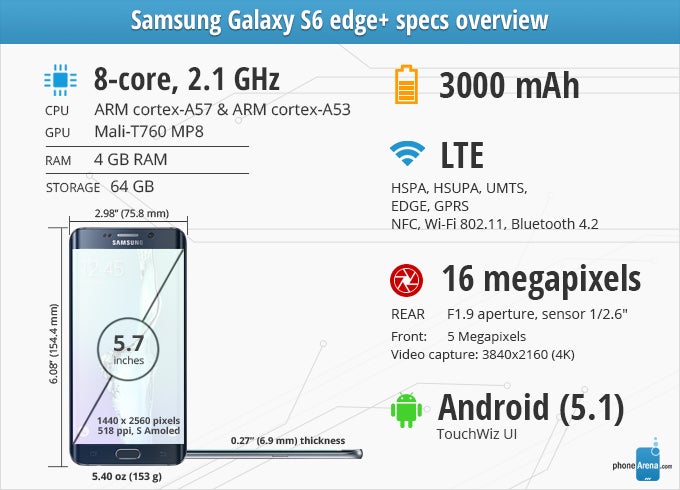
Display
Bigger than before, we have more real-estate to work with this time around, but the dual-curve edges once again add to the aesthetics.
Naturally, its gorgeous-looking design is primarily attributed to the curved 5.7-inch 1440 x 2560 (Quad-HD) Super AMOLED display fashioned onto it, which is a few steps up in size from the 5.1-incher found with the Galaxy S6 edge. Technically speaking, its pixel density is lower at 518 ppi, but regardless, it’s still incredibly sharp and detailed. It’s a visual feast for the eye to see, that’s certain! And of course, pixel density with the S6 edge+ is equal to that of the Note5, which has a panel of the same size and resolution.
As we’ve realized, Samsung has nearly perfected the art of producing perfectly calibrated screens – and it continues to show here with the Galaxy S6 edge+. Even though there are subtle anomalies with its color reproduction in the sRGB color spectrum over what’s found with the Note 5 and S6 edge, it’s still largely very accurate in reproducing true-to-life colors. Better yet, its color temperature of ~6700K is pretty close to the 6500K reference point, so it’s a panel that appears very neutral in its color tone... as long as you stick with the 'Basic' screen mode. As always, there are a few other modes, which mostly pump things up to deliver colors that tend to be perceived as punchy and vivid, but also artificial.
In terms of visibility, its 502-nit luminance is less than the Galaxy S6 edge’s achievement of 553 nits, but it’s still pretty visible outdoors – even when it’s looked at in direct sunlight. It also appears to be superior than the Note5's display, which peaks out at 470 nits of brightness. Typical of AMOLED technology, the screen delivers outstanding viewing angles as far as retaining brightness and contrast goes, but on the downside, colors exhibit dramatic shifts in their quality as we turn the screen even slightly. Meanwhile, thought, we continue to appreciate the deep black levels of this AMOLED display, which helps things on screen appear that much livelier and contrasty. All told, everything about the display is expected.
Going beyond the specs and objective benchmarks, the dual-curved edges of the display are what makes it unique-looking and different in the space. The curve is pretty much unchanged from the S6 edge, so it’s subtle and doesn’t slope as much as the one found on last year's Galaxy Note Edge. Indeed, it’s accompanied with certain features that aren’t at the disposal of other displays, giving it some unique features against the competition, but the curved edges are still there primarily for the slick aesthetics. We’ll explain their new features a bit later in the interface section.
Interface and Functionality
While it shares the same TouchWiz experience as the Note5, its exclusive set of edge screen features are still underwhelming.
The Galaxy S6 edge+ and Galaxy Note5 share the same up-to-date TouchWiz UI experience, which continues to follow Sammy’s new principle of “less is more.” For the most part, it’s still largely similar to what we’ve seen already with the Galaxy S6 edge from earlier in the year, and thus far, it’s been well received for its slimmed down offering. However, what’s apparent here (and unique to the edge line) are the new features that pertain to its dual-curved display.
Before we get into the nitty-gritty of that, let’s first spend a little time talking about the visuals. On the surface, it appears to be exactly the same to what’s offered by the existing S6 line, which includes things like that neat parallax-like effect with the wallpaper, downloadable themes, one-handed mode, and multi-window for true multi-tasking. However, closer inspection of the interface reveals a subtle facelift to the icons – they’re slightly more rounded. Well, that’s basically the extent of its visual change, but in staying faithful to Lollipop’s principles, many of the core apps stay true to the principles of Material Design. That means we get simple layouts that are accompanied by concise fonts with bright and bold colors.
New Edge screen features
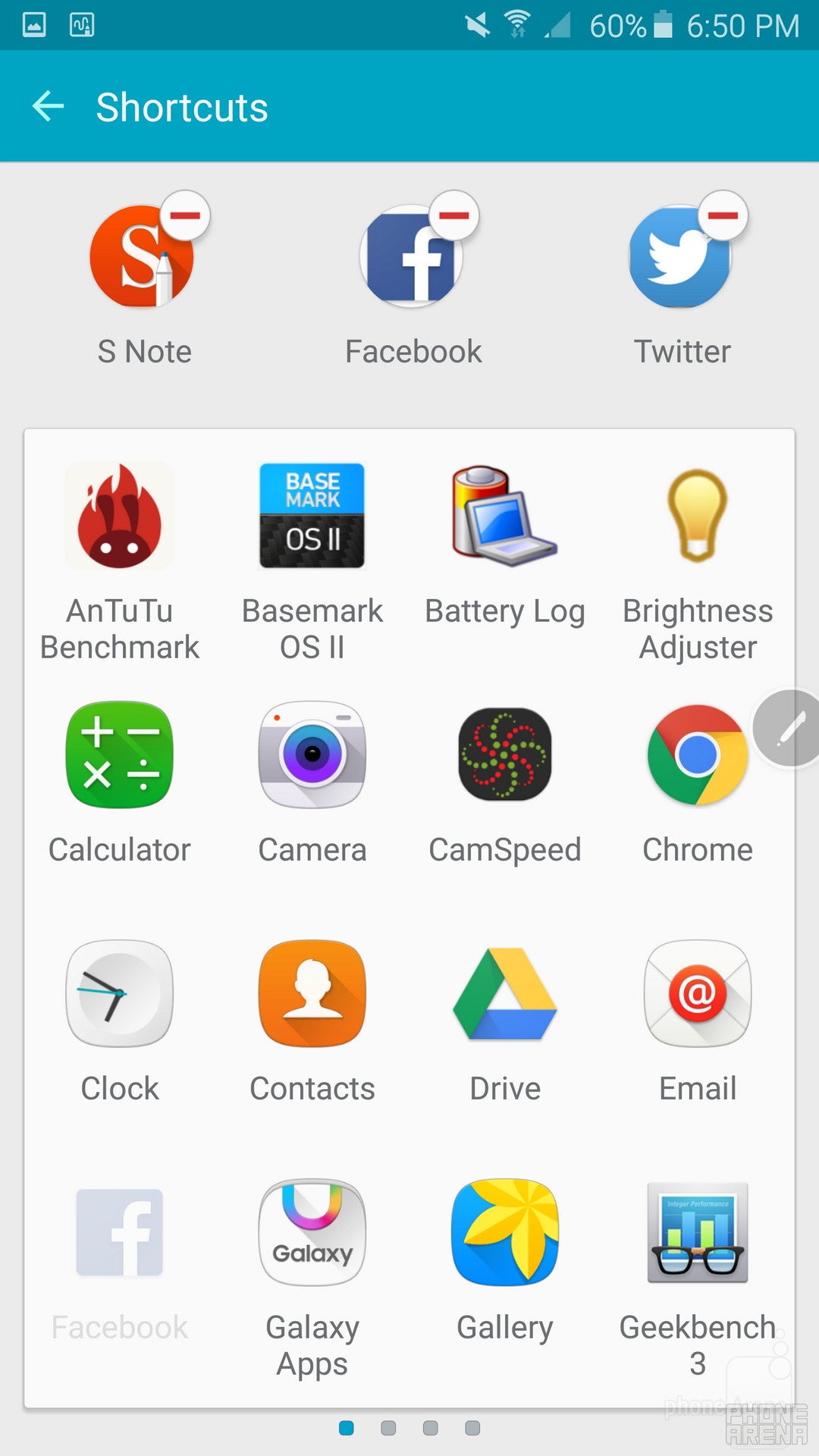
Out of them all, we still feel that edge lighting is rather gimmicky, mainly because it’s absurd to place the phone’s screen against a surface – with the potential of it incurring scratches and whatnot. However, the Galaxy S6 edge+ manages to tack on some additional functionality that’s not offered by the Galaxy S6 edge at the moment.
Apps Edge: This is a new pane that resides in the same area as people edge, so all that’s needed is to just swipe over to access it. From here, we can launch any of the 5 preselected apps of our choosing by simply pressing on the associated icon. At its core, it’s just another way to multi-task, but it’s useful because the tab is accessible from any screen.
Edge screen position: Yes, it’s a minor new feature, but one that makes it less of a pain accessing the tab for people edge and apps edge. Due to the sizable frame of the phone, we have the choice of where to place the tab, not only between the left or right edges, but also its placement along the side. Of course, we can set it down closer to the middle of the screen if that’s where our thumb is naturally positioned.
Phonebook
It’s flaunting the same layout and functionality we’ve seen already with the S6 edge. Essentially, it means that Google’s influence is evident, since the layout bears the distinctive qualities that encompass Material Design. So essentially, what we have here is dial pad that employs bright colors and a cleaner, overall presentation. Functionally, though, there’s nothing extraordinarily new that we haven’t seen elsewhere.
The phonebook is broken down to three categories: log, favorites, and contacts, which are all pretty self-explanatory. Unfortunately, contacts from all of your stored accounts are displayed in a unified manner through the contacts section of the phonebook. However, running the actual Contacts app offers us the option to choose what contacts to display.
Organizer
Diving deeper into the Galaxy S6 edge+’s wealth of organizer apps, the “less is more” approach is undoubtedly consistent – both in the visual presentation of apps and their functionalities. For example, the S Planner is by default set to a monthly view, but Material Design is once again made profound in the way it’s flaunting a cleaner look – one that isn’t cluttered with pull down menus.
The Calculator app is strikingly simple with its layout much like the rest of the core apps, however, there are no advanced functions offered by it. Basically, what we have at our disposal are basic calculations and nothing more.
And finally, the Clock app is broken down to alarm, world clock, stopwatch, and timer. Naturally, they function as they’re intended, while still sporting clean and uniform layouts, but we do like the slick dynamic look of the world clock, seeing that we’re able to rotate the globe using our finger.
Messaging
Given the choice of using Samsung’s Email app or Gmail, we’d suggest going with the latter mainly because it does a phenomenal job or organizing emails. Not just that, but now that we can setup email accounts other than Gmail, it’s nice that it’s now a hub for all our emailing needs.
Taking a peak at the TouchWiz keyboard, there’s almost no change whatsoever with its layout, size, and function. Just as before, it’s great that there’s a dedicated row strictly for numbers from within the main layout, as opposed to accessing them from a secondary layout, but it would’ve been nice if buttons were a bit wider to fully make use of the space. Even with its dual-curved edges, it doesn’t hinder the typing process because the generous real estate makes it especially easy to use. We can’t complain about its effectiveness, but other alternatives like SwiftKey are great options if you’re not a fan.
TouchWiz is incredibly powerful, but the edge screen is still underdeveloped
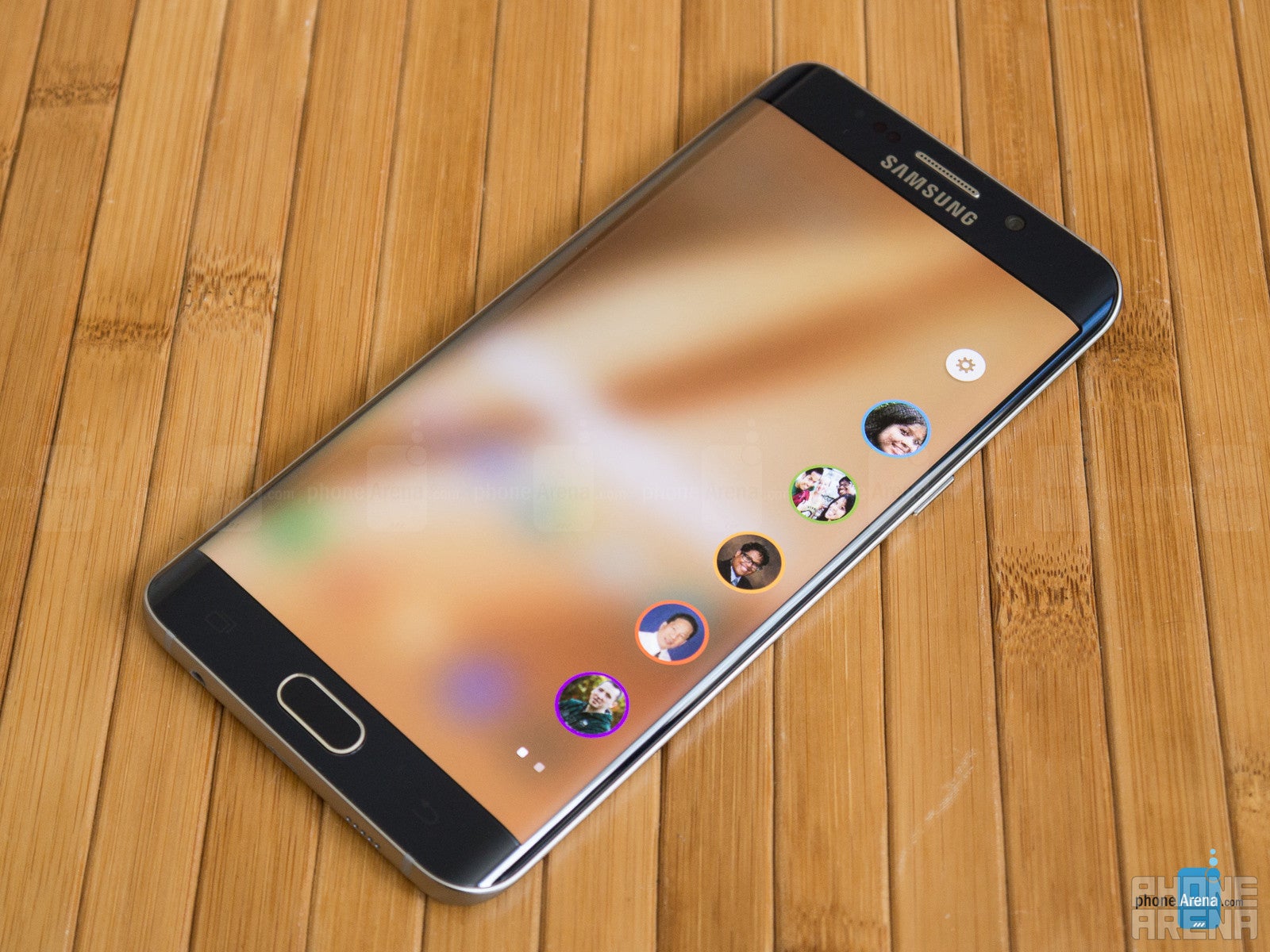
At the same time, however, we feel as though that the dual-curved display isn’t being used to its potential. From the looks of it all, there are only a bare handful of new features in tow, but they’re nothing really significant in the greater scheme of things.
Processor and Memory
Snappy and smooth, that’s how it goes with the Exynos chip of the Samsung Galaxy S6 edge+.
Don’t expect anything new with this one, that’s because it’s employing the same processing hardware used by the existing S6 line – so it ships with the latest Exynos 7420 system chip, a piece of silicon made using the industry-leading 14nm FinFET process in Samsung's foundries.
The Exynos 7420 is an octa-core chip with four Cortex A57 cores running at up to 2.1GHz, and four more power-efficient A53 cores clocked at up to 1.5GHz. What’s different from the S6 edge, though, is that it’s complemented with 4GB of LPDD4 RAM. So what does this all translate to? Hardly a surprise, it runs just as quick and snappy as the S6 line, which isn’t shocking considering this particular piece of silicon continues to blow away benchmark scores.
In fact, processing benchmark scores place it on the same pedestal as the S6 and S6 edge. Scrolling between the homescreen is smooth, apps launch instantly, and its performance is accompanied with buttery responses – the results of a high-quality processor, of course. The increase in RAM helps to keep apps from having to refresh constantly, but in our experience, it’s really tough to say if it actually does.
Moving over to its graphics processing performance, the Mali-T760 MP8 GPU makes an appearance again, delivering acceptable results for a phone going with Quad-HD resolution. Although it’s not class-leading in the GFXBench tests, we have to remember that it’s contending with Quad-HD resolution – so it’s not able to achieve the higher frame rates produced by the HTC One M9 or Apple iPhone 6. Then again, neither of those phones are dealing with such a pixel dense screen.
It's also no surprise that the Galaxy S6 edge+ features 32GB of internal storage in the base model. In addition, it’s also going to be offered in a 64GB flavor in the United Sates, and both versions will feature high-speed UFS 2.0 storage. With the introduction of its new premium design language, Samsung has opted to omit having microSD card slots in its devices; such as the case here with the Galaxy S6 edge+. It’s questionable whether or not this feature will be missed, as it’s a case-by-case thing. Still, it really would’ve solidified its value even more if it were indeed offered.
Internet and Connectivity
The only significant thing going for the Galaxy S6 edge+ in the web browsing department, besides the usual expectancies for any high-end device, is the vast real estate we’re given for the occasion. Not surprisingly, it mitigates the need to scroll or pinch zoom a whole lot, as most pages are able to fit in their entirety on the display. Reading text is still possible here, thanks to its Quad-HD resolution, but for those who need to rely on good old navigational controls, you won’t be disappointed by its swift response. Throw in lighting fast 4G LTE connectivity, you have all the necessary ingredients here for a great experience.
On the connectivity side of things, the Galaxy S6 edge+ supports 4G LTE with a staggering amount of support for various bands. It's also got MIMO (2x2) antennas for improved reception and dual-channel Wi-Fi, as well as NFC, Bluetooth 4.2 with support for the low energy profile, and positioning via GPS, Glonass, and the Beidou systems.
Camera
Samsung doesn’t disappoint, as the Galaxy S6 edge+ is incredible with its camera performance.
Samsung has traditionally been a company that offers one of the best cameras on Android, and it aims to continue this tradition with the S6 edge+, as it uses the same 16-megapixel rear/5-megapixel front camera combo that we know and love from the Galaxy S6 edge. This time around, we have a 1/2.6-inch sensor size (one of the larger on Android) with 1.1 micron pixels, and both the front and rear cameras feature wide, f/1.9 aperture lenses, which is a good asset if you care about collecting more light and getting good pictures in low light.
The quick launch camera shortcut introduced with the S6 and S6 edge is here as well: just double click the home button to go straight into the camera application. The camera app is largely the same solution as on the Galaxy S6 edge with two modes being the big highlight: the auto mode that is self-explanatory and the manual 'Pro' mode. The latter can now also control shutter speed on the Galaxy S6 edge+, as well as support to capture in RAW, for a truly full manual ride.
Needless to say, the camera experience does a wonderful job to encompass such a wide field – one that caters to both casual users and enthusiasts. Beyond those two aforementioned shooting modes, its roster set includes staple things like HDR, Panorama, Selective Focus, Slow Motion, Fast Motion, and Virtual Shot.
New to the listing includes a Video Collage feature that allows us to make a collage using video snippets, and a YouTube Live Broadcasting mode. This is similar in premise to Periscope, Twitter’s live video streaming service, which allows us to perform a livestream via YouTube using either the front or rear cameras. It’s a different way of sharing video content at a notice, as it generates a link we can share through our social networking accounts – where users can see the stream live, in real time. Even though there’s messaging interaction via the YouTube website, there’s no way to see those messages or interact with them through the camera app. We will say, however, that its streaming quality is superior to Periscope because it’s done at a higher resolution (up to 1080p), and that it shoots it horizontally – as opposed to vertically with Periscope.
Image Quality
Leveraging the same set of gear already fashioned onto the S6 edge, the Samsung Galaxy S6 edge+’s camera delivers outstanding photos filled with plentiful details, rich colors, and striking dynamic range to make it a generally good all-around performer. You won’t miss a beat either with this camera, as running the camera app and snapping the image is achieved swiftly. Throw in optical image stabilization, it really helps to mitigate blurring that can be pesky with shaky hands.
However, we will say that the Note5 delivers slightly sharper details upon closer inspection. It’s honestly tough to realize it, as it can be overlooked, but when we put the same images side-by-side, it’s noticeable that the Note5’s shots are just a hairline more defined. Like we said, it’s very minimal, but it’s something worth pointing out.
Naturally, its best results are produced when lighting conditions are ideal – such as outdoor shots, or nighttime scenes with hard lighting present. Details are undoubtedly abundant, which gives us some elbow room to crop photos later on without a whole lot of loss to the overall quality. The colors reproduced by the camera can sometimes have a hint of saturation, but it seems to only kick in more profoundly under artificial lighting – such as the case with the photo with all the flowers in the store.
Much like everything else, we see a dip with its quality under low light. That’s not all that shocking, as it’s a common expectance with phones, but at the very least, its shots are still bright enough to expose details. Sure, details are a bit softer toned, but we’re content that graininess and noise are kept to a minimum – so they hardly have any sort of presence. Fortunately, the LED flash produces the same potency as what’s found on the S6 edge’s camera, which allows for an effective amount of lighting to brighten up the scene without being too overpowering.
The S6 edge offered nearly everything we wanted in a camera experience, with the exception of having shutter speed adjustment with its ‘Pro’ mode. At long last, Samsung listened and finally delivered the goods here because it’s now available with the Galaxy S6 edge+. This one feature is exceptionally useful for enthusiasts who want better looking low light shots, or those who want to achieve some cool light painting streaks.
We tested it out by snapping a shot of the stuffed animals on the couch using its automatic mode. As expected, it’s decent looking, but it’s obvious that the overall shot is softer toned and light on the fine details – with graininess having a significant presence. Using the ‘Pro’ mode and slowly adjust the shutter speed from 1 second all the way to 10, while keeping it at ISO 100, we can see that the image taken with the longest shutter speed (10 seconds) is brighter, more detailed, and doesn’t have the soft look of the automatic shot.
Moving onto its other shooting modes, the Galaxy S6 edge+’s HDR mode works similarly too by helping to produce a neutral exposure throughout the shot. In particular, the HDR photo of the statue in the garden shows how its HDR more is able to adjust parameters for shadows and highlight to help expose details that are lost in the normal shot. To be fair, though, it works best with high-contrast scenes. Unlike other HDR modes that seem too artificial, the Galaxy S6 edge+ doesn’t go bonkers with the color saturation.
And yes, it takes some good looking selfies – just as long as there’s an abundance of lighting around. Not only do we have a wide-angled lens capable of capturing a group of people into the shot, but it’s accompanied with some editing tools that offer real-time adjustment. However, we find them to be way too artificial, going as far as transforming us into anime characters.
Video Quality
Variety is such a good thing to offer! Thankfully so, the Galaxy S6 edge+ is a beast of a phone when it comes to video recording – providing us with a wealth of resolutions to capture video. Specifically, we have 3840 x 2160 UHD, 2560 x 1440 QHD, 1080p 60fps, 1080p 30fps, 720p, and VGA. Not to mention, we also have fast and slow motion capture in our tool box as well.
Between the various shooting modes, the only major difference between them is detail. Therefore, if you want the highest amount of captured detail, it’s best to go with UHD recording, as details are in full force throughout the recording. Beyond that, we’re ecstatic to see that the Galaxy S6 edge+ offers image stabilization to keep things steady, clear & distinctive audio recording, gradual exposure adjustment, and a pretty spot-on continuous auto-focus. Trust us, the camera is perhaps one of the most versatile around, not only for the superb quality, but also for its ease of use. Point, shoot, and stop, the process is genuinely effortless and straight to the point.
Even though we were able to spot a small detail between the Note5 and Galaxy S6 edge+’s still shot performance, it’s basically non-existent here, as the two phablets are totally capable of shooting slick video footage.
Multimedia
What a visual feast! Its Super AMOLED display continues to amaze when it comes to multimedia consumption.
For those of you choosing instead to stick with the TouchWiz music player, as opposed to Google Play Music, you’ll be presented with the same design changes already we’ve seen established with the updated TouchWiz experience of the S6 edge. Simplicity, that’s the core principle of the music player, which now favors a cleaner look than before. We wouldn’t say that it’s as dazzling as say, the new Sense 7.0 music player, but the toned down approach helps to give it a more streamlined feel.
Whether it’s the new placement of the rear speaker, or something else entirely, the Galaxy S6 edge+’s audio output is less than what its pint-sized sibling produces. At 73.1dB, it’s still powerful enough to reverberate in tighter confines with a very neutral toned output. Yet, it’s not deafening like the S6 edge, but at the same time, it’s not shrill-toned either to make it sound irritating to the ear.
Listening through the headphone jack, however, delivers results that are more resounding. Squeezing out a commanding 0.766V of power, the highest amongst Sammy’s high-end crew, it produces crisp audio with an even balance throughout all audio ranges. Bettering its quality, we can amp things by utilizing the various equalizer options available with its SoundAlive feature.
Interestingly enough, the Galaxy S6 edge+ has an option for ‘UHQ Upscaler’ in the settings menu, which Samsung alleges to enhance and upscale audio for a clearer listening experience. Using a pair of V-Moda M-100 headphones, we barely notice a difference with the quality. In fact, it seems as though it’s been treated to a boost in treble and bass for a more robust tone – and nothing more! While we don’t notice a tremendous difference in our experience, Samsung claims that ultra-high quality audio (UHQA) is supported over Bluetooth on Samsung’s next generation wireless audio accessories.
A tantalizing treat for the experience, setting the display to ‘adaptive’ mode offers the most ideal video watching experience with the Galaxy S6 edge+. It’s pretty superb watching videos on its Super AMOLED screen, since the contrast and color saturation are manipulated to achieve the best possible visual results – and it helps too that it’s a powerhouse to fluidly play all sorts of content.
It also wouldn’t be a Samsung phone if it didn’t offer its pop-up feature, allowing videos to play on top of whatever we’re doing. This is a familiar tool for any Samsung smartphone owner, since it’s been a mainstream thing offered by its high-end devices. Alternatively, we can also use the Multi-Windows feature to simultaneously watch a video while doing something else. And thanks to tis processing prowess, too, we can perform a digital zoom on the video at any time by just using a pinch zoom gesture.
Editing tools are diverse throughout the Gallery app, enabling us to do all sorts of editing on the fly with the Galaxy S6 edge+. Come to think of it, the selection is what we’d expect from most high-end phones nowadays, but there’s nothing really exclusive or unique about the tools at our disposal. Sure, we have things like cropping, filters, and shaping effects, but the added option of making collages is an added treat – a feature that’s rarely seen through stock Gallery apps.
Call Quality
Everything about this is perfect, as voices have exceptional quality on both ends.

On the other end of the line, the microphone also does a better job than the Note5 to preserve voices. They’re clear and succinct, without a whole of artificial elements applied to them. And during windy conditions, its noise-cancelling feature does an excellent job of cutting out unwanted noise. Lastly, the speakerphone is suitable to use in noisy environments thanks to its strong output.
Battery
It’s by far Samsung’s best performing phone, offering extended longevity with its battery. Also, it’s one of the fastest charging phones around.
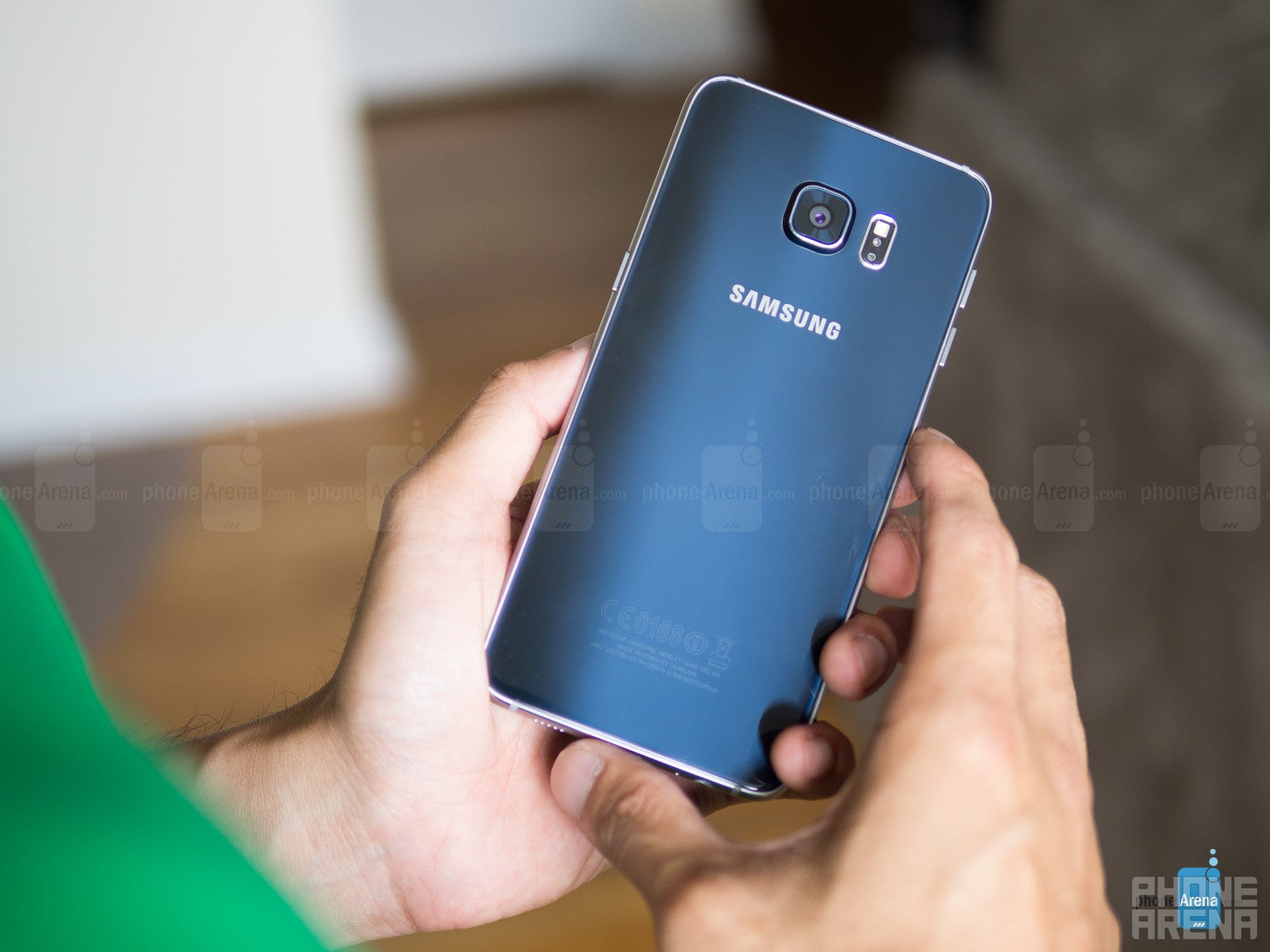
Now, if that’s not enough to make you forget about a removable battery, you’ll be downright floored knowing that the Galaxy S6 edge+ offers one of the fastest recharge times out there. Requiring only 80 minutes, it actually beats the Galaxy S6 edge in being recharged back to 100%! That alone is impressive considering that the S6 edge employs a smaller capacity battery cell. Cementing its place, the Galaxy S6 edge+ also feature built-in wireless charging as an alternative for those who relish this method.
Conclusion
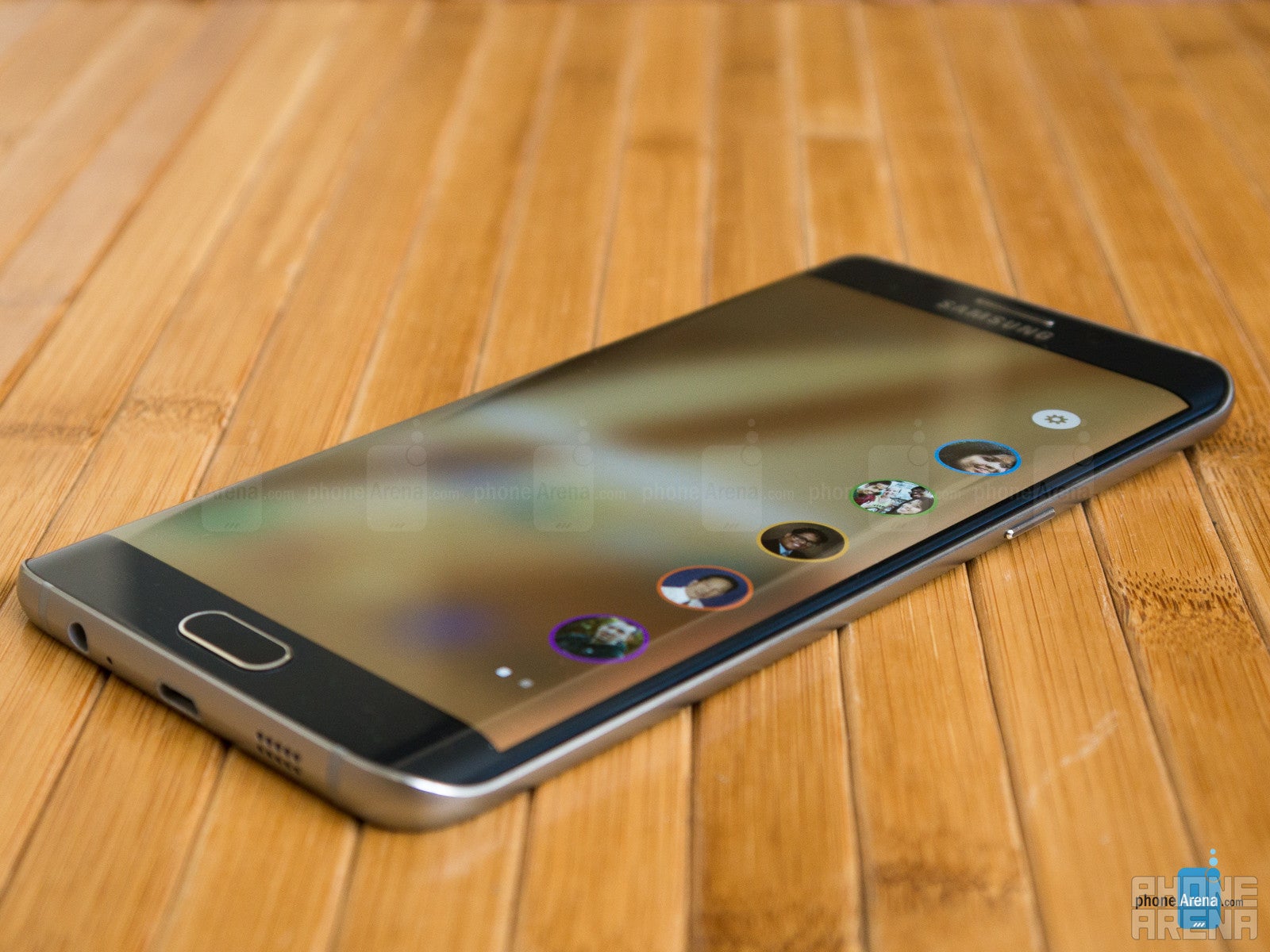
Getting straight to the point, the Galaxy S6 edge+ is more of that “fun” smartphone that should theoretically appeal to a wider audience. We say SHOULD because of the appeal that accompanies its dual-curved display, in how it adds to the outstanding aesthetics of the phone’s frame. However, as we’ve seen, it’s still an area of opportunity because the features it offers are still widely underwhelming – not even coming close to what we’ve seen already with last year’s Galaxy Note Edge.
Then we come to its pricing, which makes it even tougher to recommend it over the Galaxy Note5. Taking a peek at its outright pricing through the major carriers here in the US, its price for the base 32GB model ranges between $768 and $815 – while the 64GB model goes for $780 to $920. Those prices are roughly $50 to $90 more than what you can shell out for the Galaxy Note5, so that’s alarming in itself.
Pricing goes a long way to determine how valuable something is, so in this particular case, it’s a tough sell for the Galaxy S6 edge+. In all fairness, it’s still an incredible, high-performing smartphone that produces solid results in every category, but its expensive costs, especially over the Galaxy Note5, don’t necessarily help out its cause – more so with the handful of value-conscious smartphones we’ve seen over the last several months.
If you have the disposable income and prefer its slicker looking design, there’s no reason not to pick up the Samsung Galaxy S6 edge+. Of all the phablets that are available right now, it’s undeniably the best looking out of the bunch – and it has all the specs and top-notch performance to validate its purchase! Beyond all of that, though, you’ll just need to convince yourself that it has more to offer to you than Sammy’s other prized phablet.
Software version of the review unit:
Android Version: 5.1.1
Build Number: LMY47X.G928FXXU1AOGJ
Kernel Version: 3.10.61-5412468







































Things that are NOT allowed: